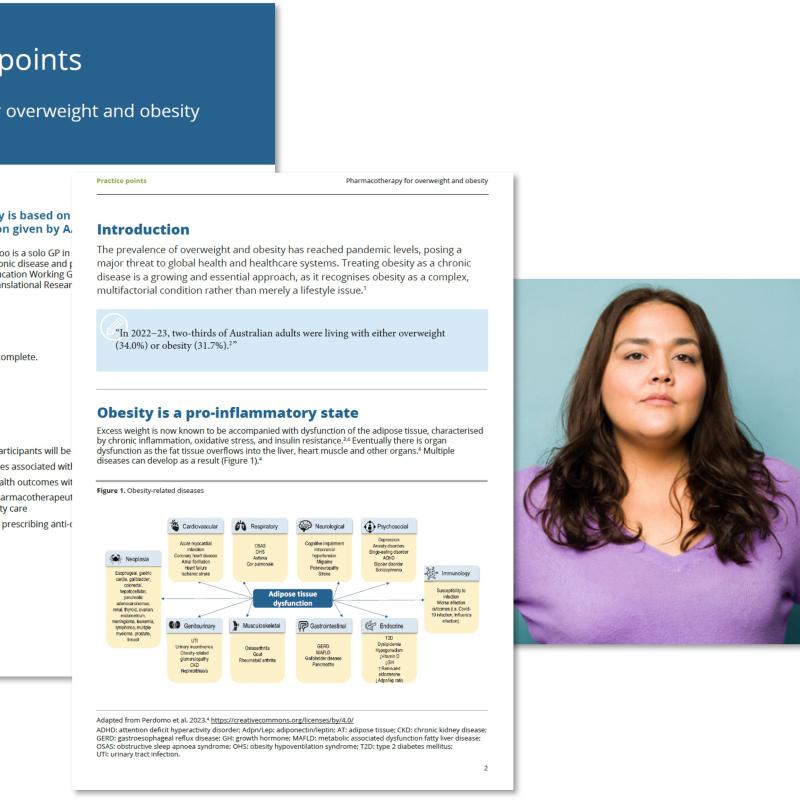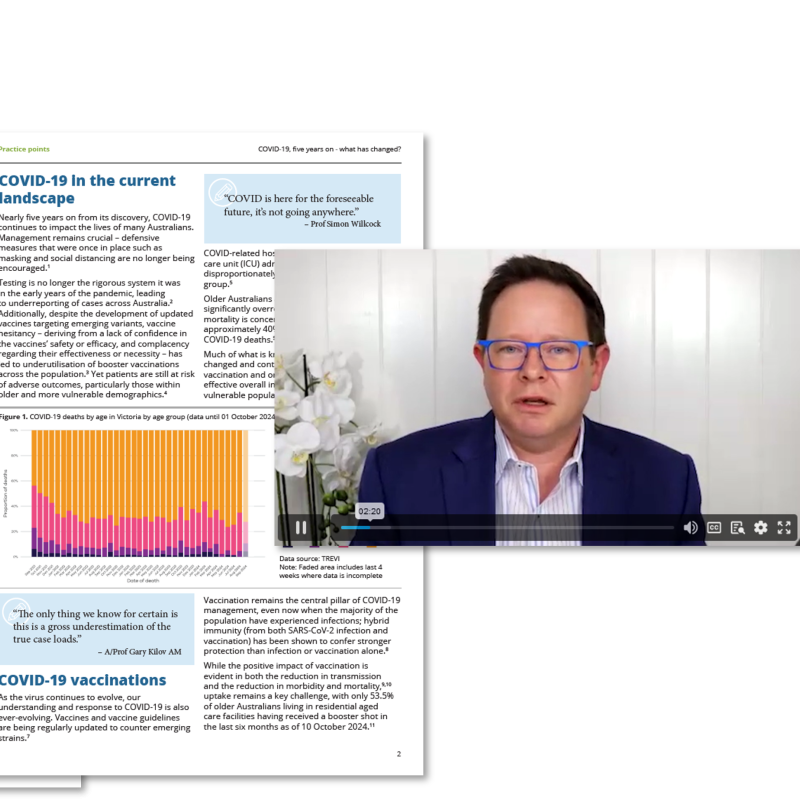Search and filter
Showing 1 - 12 of 69 results
Sort by:
- Date added (newest)
- Date added (oldest)
- Title (A-Z)
- Title (Z-A)

Modules
EA:
0.5
MO:
0
RP:
0.5
Total:
1
Practice points: Pharmacotherapy for overweight and obesity

Modules
EA:
1
MO:
0
RP:
0
Total:
1
On-demand webinar: Pharmacotherapy for overweight and obesity

Events
EA:
1.5
MO:
RP:
Total:
1.5
Live webinar: Residual risk in CVD: Same war, new battle

Modules
EA:
1.5
MO:
0
RP:
0
Total:
1.5
On-demand webinar - Mosquito-borne diseases: A travel medicine update for GPs

Events
EA:
MO:
RP:
Total:
0
GPCE Sydney 2025

Modules
EA:
0.5
MO:
0
RP:
0.5
Total:
1
Practice points: COVID-19, five years on - what has changed?

Advanced courses
EA:
3
MO:
2
RP:
1.5
Total:
6.5
Transformational technologies in type 2 diabetes: CGM and connected insulin pens

Modules
EA:
1.5
MO:
0
RP:
0
Total:
1.5
On-demand webinar: Chronic kidney disease - what GPs can do to prevent progression and premature death

Modules
EA:
1.5
MO:
0
RP:
0
Total:
1.5
On-demand webinar: RSV - winter season management of older adult patients with comorbidities
Advanced courses
EA:
5
MO:
0
RP:
2
Total:
7
Asthma in Australia: Practical solutions for challenges in primary care
Modules
EA:
1
MO:
0
RP:
0
Total:
1
Asthma in Australia: 1. Asthma basics
Modules
EA:
1
MO:
0
RP:
0
Total:
1
Asthma in Australia: 2. Partnering with your patients
